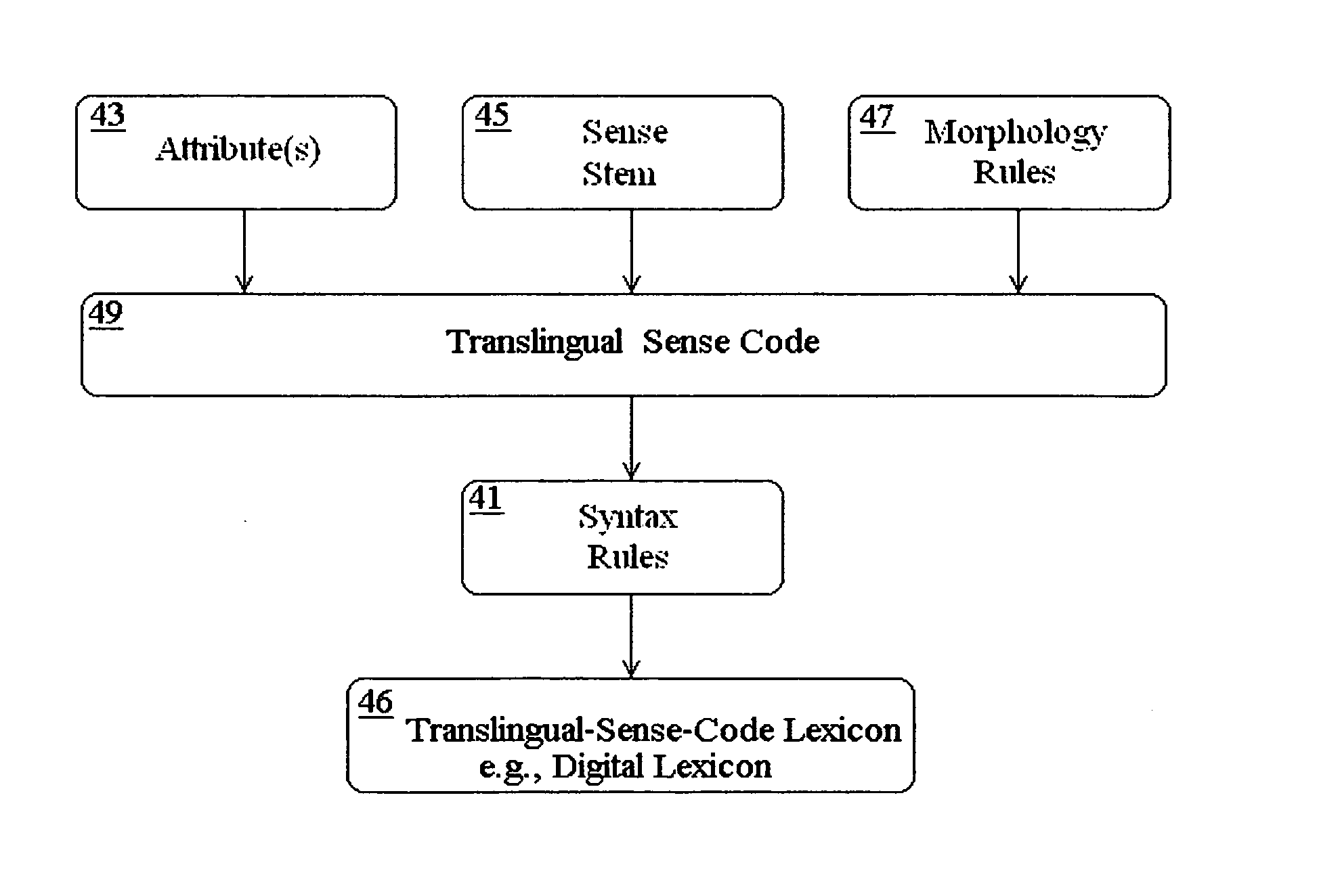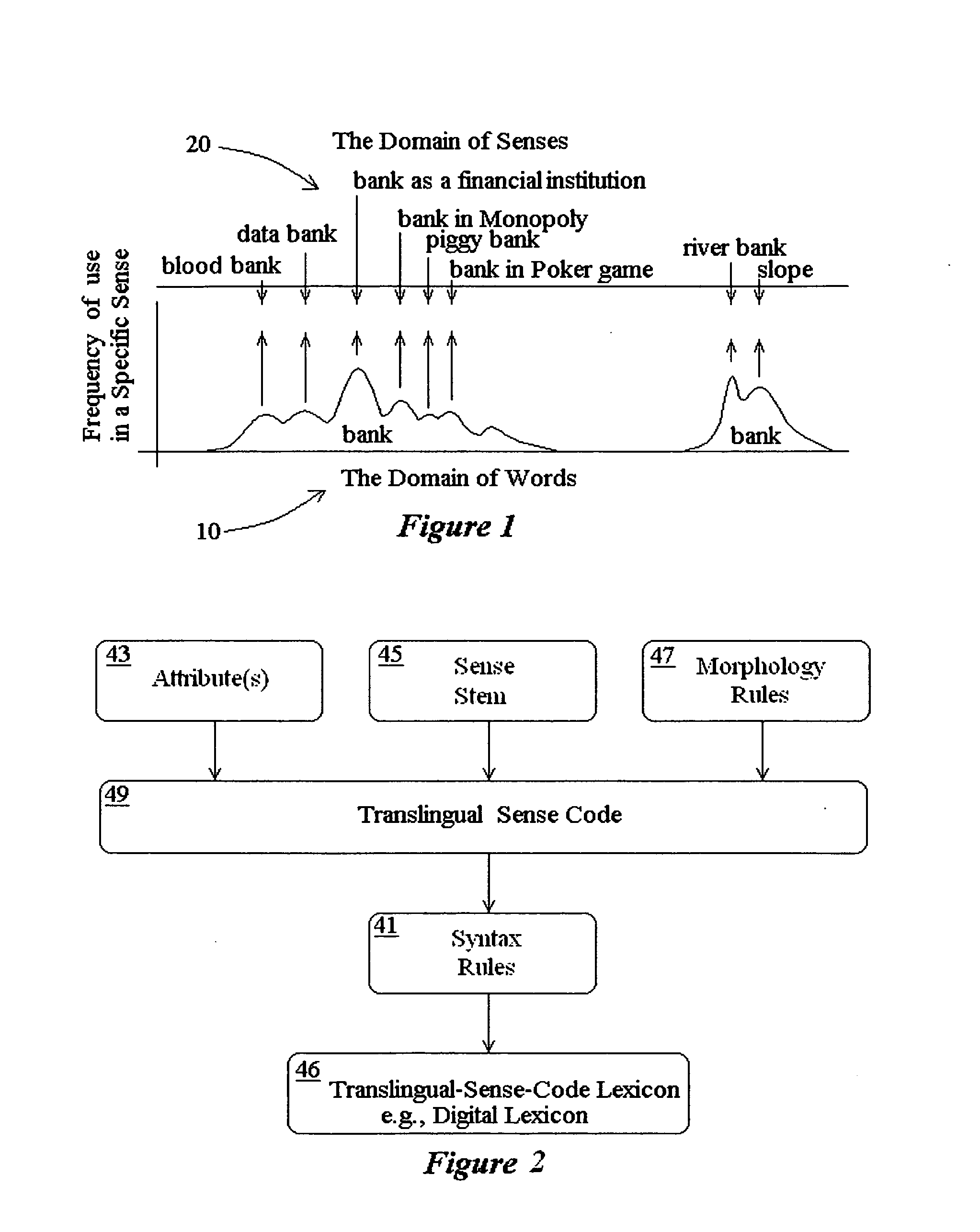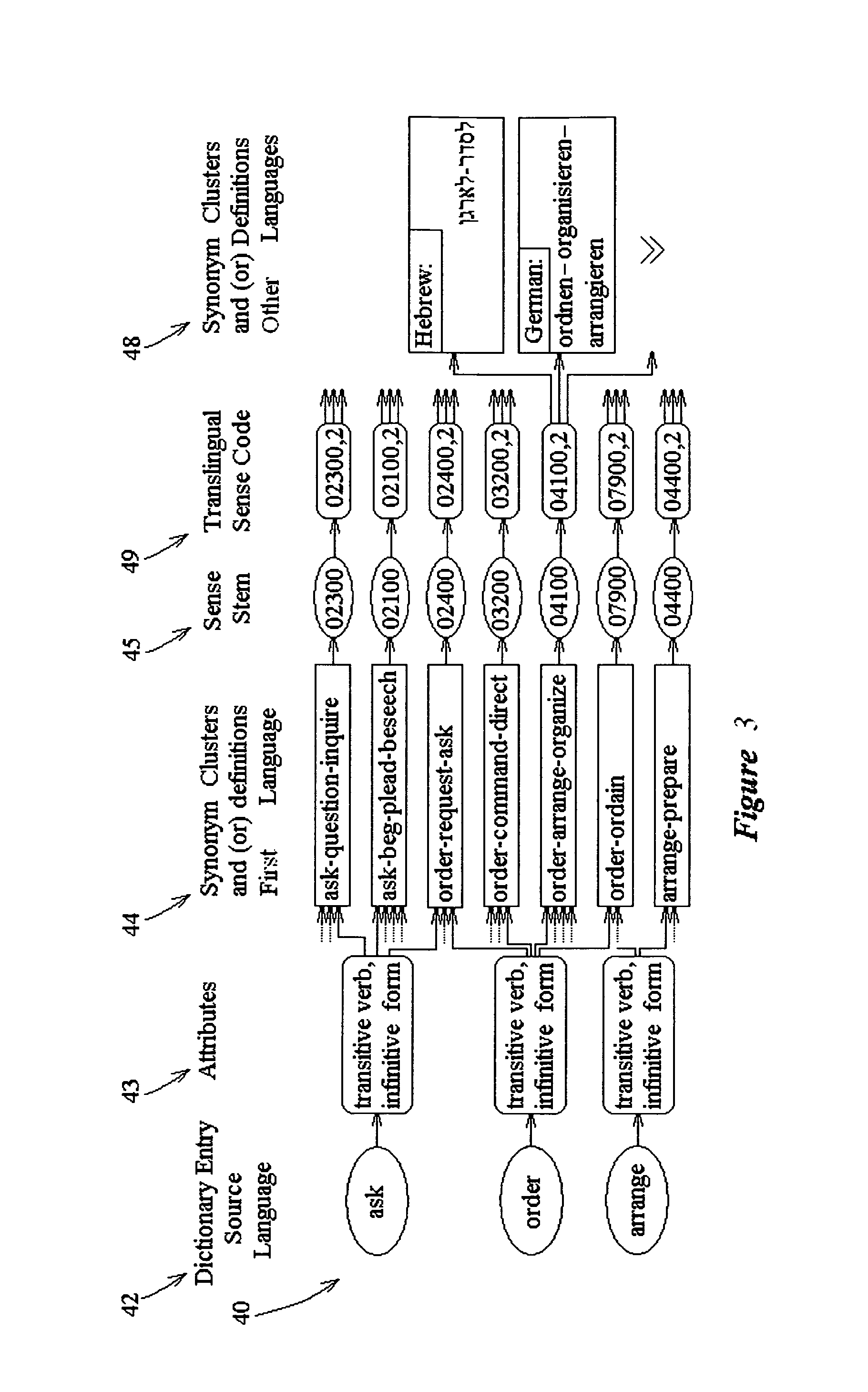Digital universal language
a universal language and digital technology, applied in the field of digital and translingual sense codes, can solve the problems of ambiguous and elusive correspondence between source and target, practically impossible to catalog in a dictionary all senses associated with a word, unknown and unpredictabl
- Summary
- Abstract
- Description
- Claims
- Application Information
AI Technical Summary
Benefits of technology
Problems solved by technology
Method used
Image
Examples
example 1
The Translingual-Sense-Code 49 as a Vectors of Natural Numbers
[0072]Referring is now made to FIG. 5, which illustrates a system for expressing the translingual sense code 49 in digital format, using vectors of “n” natural numbers, A(1), A(2) . . . A(n), in accordance with an embodiment of the present invention. Each number “n” is expansible, as necessary, being of a single digit, double digits, and so on.
[0073]According to the present example:[0074]the first position A(1) defines the sense stem 45;[0075]the second position A(2) defines the function, so A(2)=1, inflects the sense stem to mean a noun of the specific sense, and so on;[0076]the third position A(3) defines the person, so A(3)=1, inflects the sense stem to express first person. Note, that in some languages, this inflection applies only for pronouns, in others, it applies to verbs; and still in others, to verbs, adjectives, and even prepositions. The person inflection in the translingual sense code 49 is made available, re...
example 2
[0096]The manner of generating the translingual sense code 49, for example, using FIG. 5, is illustrated in reference to the paragraph below:
[0097]“Sam was a sorter. He sorted files for a living. But the sorted files got to him. He was tired of sorting. So he bought a sorting machine to sort his files. And he promised himself that he would never sort files again.”
[0098]Letting a natural number 04110 represent the sense stem 45, as relating to sorting—arranging according to characteristics, the following constructions can be made:
[0099]1. sorter in “Sam was a sorter”
[0100]In accordance with the preferred embodiment of the present invention, the translingual sense code 49 that forms the unequivocal word equivalent for a human sorter, as in “Sam was a sorter,” may be constructed in accordance with the definitions of FIG. 5, as follows:[0101]A(1) denotes the sense stem, for example, 04110;[0102]A(2) denotes a noun;[0103]A(3) denotes 3rd person;[0104]A(4) denotes male;[0105]A(8) denotes ...
example 3
Syntax Rules, in Accordance with a First Embodiment
[0128]Given that the translingual sense code 49 are unequivocal word equivalents, they may be combined to form phrases and sentences, using any known syntax rules, for example, those of the English languages.
[0129]Accepting the order: subject, predicate, direct object, as syntax rules 41, the sentence, “He sorted files,” can be expressed by the translingual-sense-code lexicon 46, and specifically, by the digital lexicon 46, as follows:
[0130]“He”“He” needs no sense stem, being defined by the other attributes.
[0131]“sorted” The transitive verb “sorted,” in the past tense, has been described in the second example of digital sense morphology, above.
[0132]“files” Let the natural number for the sense stem 45 associated with “file—a collection of papers arranged in a folder,” be 06750.
[0133]Thus, “He sorted files” =
[0134]= 0,1,3,1,0,0,1,1,2 04110,2,3,1,0,0,1,1,1 06750,1,3,30,0,0,0,4.
PUM
 Login to View More
Login to View More Abstract
Description
Claims
Application Information
 Login to View More
Login to View More - R&D
- Intellectual Property
- Life Sciences
- Materials
- Tech Scout
- Unparalleled Data Quality
- Higher Quality Content
- 60% Fewer Hallucinations
Browse by: Latest US Patents, China's latest patents, Technical Efficacy Thesaurus, Application Domain, Technology Topic, Popular Technical Reports.
© 2025 PatSnap. All rights reserved.Legal|Privacy policy|Modern Slavery Act Transparency Statement|Sitemap|About US| Contact US: help@patsnap.com



